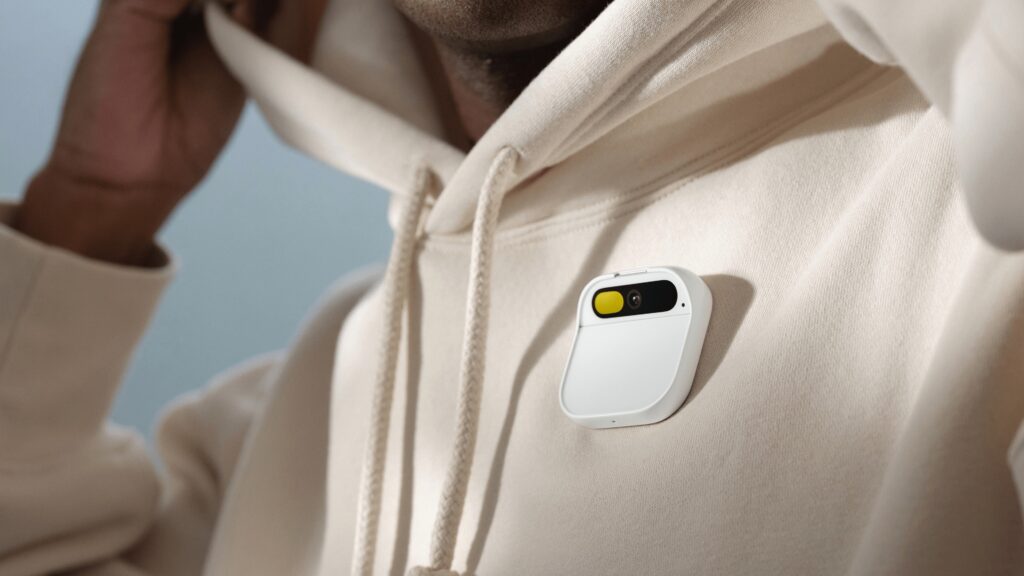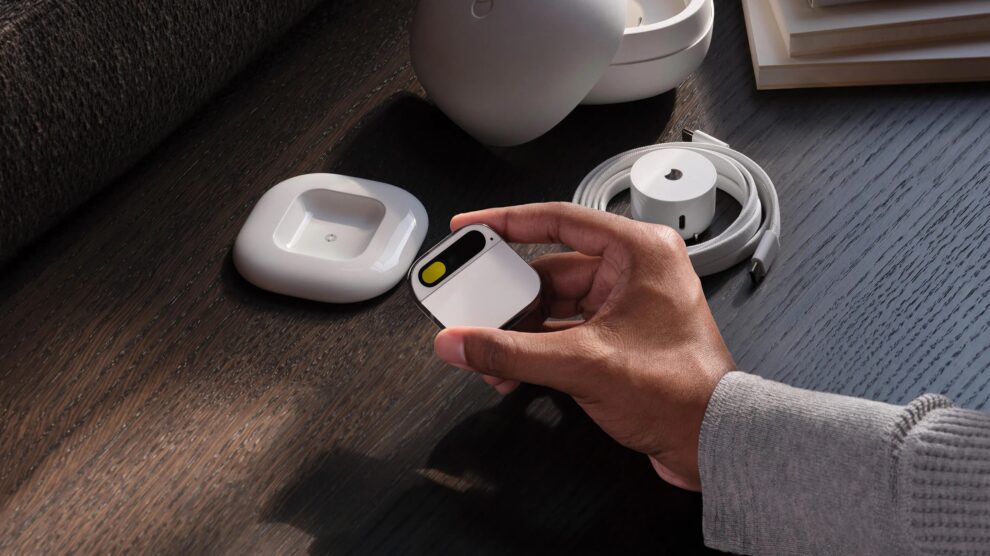The world of wearable AI technology has been abuzz with excitement and anticipation as companies race to develop the next groundbreaking device that will revolutionize the way we interact with our digital assistants. Among these contenders, Humane, a startup founded by former Apple employees, has garnered significant attention for its ambitious AI Pin wearable. However, a recent New York Times report has cast a shadow over the company’s lofty billion-dollar price tag, raising questions about the viability of its product and the challenges faced by the wearable AI industry as a whole.

The Promise of the AI Pin
Humane’s AI Pin, a sleek and compact wearable device, promised to bring the power of artificial intelligence to users’ fingertips. The company’s marketing campaign touted the AI Pin as a game-changer, offering seamless integration with various devices and services and providing users with a personalized, always-available digital assistant. The AI Pin was designed to understand natural language, respond to voice commands, and even anticipate users’ needs based on their habits and preferences.
However, despite the hype surrounding the AI Pin, the device has struggled to live up to expectations. Critics have pointed out its limited functionality, high price tag, and lackluster user experience. Many users have reported that the AI Pin falls short of delivering the seamless, intuitive interaction that Humane had promised. The device’s capabilities seem to be overshadowed by its limitations, leaving users questioning the value proposition of the AI Pin compared to other wearable assistants on the market.
Disappointing Sales Figures
The New York Times report reveals that Humane’s sales figures paint a grim picture. According to the report, the company has only managed to sell around 10,000 units of the AI Pin, a number that falls significantly short of Humane’s initial projections and expectations. This sales slump raises serious concerns about the demand for the device and the overall market reception of wearable AI assistants.
Several factors may have contributed to the AI Pin’s underwhelming sales performance. The device’s high price point, which is notably higher than many of its competitors, could have deterred potential buyers. Additionally, the limited functionality and reported user experience issues may have dissuaded consumers from investing in the AI Pin, especially given the abundance of alternative wearable assistants available in the market.
The disappointing sales figures raise questions about Humane’s ability to compete in an increasingly crowded and competitive wearable AI landscape. With tech giants such as Apple, Google, and Amazon already offering well-established wearable assistants, Humane faces an uphill battle in convincing consumers to switch to their relatively unknown and untested device.
The Billion-Dollar Valuation Conundrum
Perhaps the most striking revelation in the New York Times report is Humane’s pursuit of a staggering $1 billion buyout, despite the lackluster sales performance of the AI Pin. This lofty valuation has raised eyebrows among industry experts and potential investors, who are questioning the justification behind such a high price tag.
Humane’s billion-dollar valuation likely stems from the company’s initial investment in research and development for the AI Pin. Developing advanced AI technologies and integrating them into a wearable form factor is no small feat, and Humane has undoubtedly poured significant resources into creating the AI Pin. However, with sales figures falling short of expectations, it becomes increasingly difficult for the company to justify its valuation to potential buyers.
The report suggests that Humane may be struggling to find a buyer willing to meet its billion-dollar asking price. The discrepancy between the company’s valuation and its actual market performance has raised concerns about the sustainability of Humane’s business model and the overall viability of the AI Pin as a product.
The Challenges of Wearable AI
The struggles faced by Humane and the AI Pin highlight the broader challenges encountered by companies developing wearable AI assistants. While the concept of having a convenient, always-available digital companion on one’s wrist is undeniably appealing, translating that vision into a compelling and practical product has proven to be a daunting task.
Wearable AI devices often grapple with limitations in terms of battery life, processing power, and user interface. Balancing functionality with form factor and aesthetics is a delicate dance that many companies struggle to master. Additionally, the success of wearable AI assistants heavily relies on the quality and accuracy of the underlying AI technology, which is still an evolving field with its own set of challenges and limitations.
Another significant hurdle for wearable AI is the need to provide a truly compelling user experience that justifies the cost and inconvenience of wearing an additional device. Given the abundance of gadgets and wearables available to consumers, it will be difficult to persuade them to adopt yet another device unless it provides genuine value and utility that is unmatched by current smartphones or smart speakers.
The Future of Humane and Wearable AI
The New York Times report paints an uncertain picture for Humane and its ambitious billion-dollar valuation. The company’s struggles with the AI Pin serve as a cautionary tale for the wearable AI industry as a whole, highlighting the importance of delivering a product that truly resonates with consumers and provides tangible benefits.
For Humane to survive and thrive in this competitive landscape, it may need to reevaluate its strategy and pricing model. The company must focus on addressing the shortcomings of the AI Pin, improving its functionality, and enhancing the user experience. Additionally, Humane may need to reconsider its valuation and find a more realistic price point that aligns with its current market performance and future growth potential.
The challenges faced by Humane also underscore the need for innovation and differentiation in the wearable AI space. As more players enter the market, companies must strive to develop unique and compelling features that set their devices apart from the competition. This could involve exploring new form factors, integrating advanced AI capabilities, or finding novel ways to seamlessly integrate wearable assistants into users’ daily lives.
Ultimately, the success of wearable AI will depend on the ability of companies like Humane to strike the right balance between functionality, user experience, and affordability. As the technology continues to evolve and mature, we can expect to see more refined and capable wearable AI assistants emerge, but the path to widespread adoption and commercial success remains a challenging one.
The New York Times report on Humane’s billion-dollar price tag and disappointing sales serves as a reminder that hype and ambition alone are not enough to guarantee success in the rapidly evolving world of wearable AI. Companies must focus on delivering genuine value to users and continually innovate to stay ahead of the curve. Only then can they hope to justify lofty valuations and secure a lasting place in the hearts and minds of consumers.










Add Comment